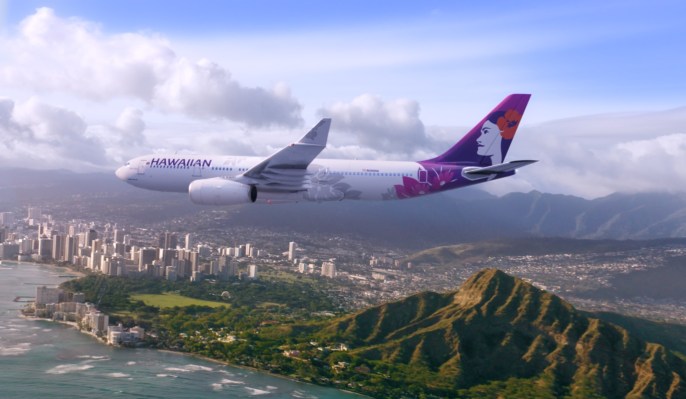SpaceX’s Starlink satellite communications service has signed its first major airline, Hawaiian, which announced that it would offer free internet on flights to and from the island using it. The specifics of the deal are not yet known but it’s a big win in one of the lucrative niches the satcom company aims to pry open.
Anyone who flies regularly is probably tired of the ubiquitous and generally overpriced in-flight internet options, often Gogo. While of course we must pause and reflect on how amazing it is that we can access the whole internet while traveling 500 mph at 40,000 feet, let’s also admit that it’s not great as Wi-Fi goes. Plus it’s like $15.
Hawaiian Airlines will offer Wi-Fi powered by Starlink on select aircraft, free as in peanuts on trans-Pacific flights like LA to Honolulu. The company said it will “equip its Airbus A330 and A321neo aircraft, as well as an incoming fleet of Boeing 787-9s” with the Starlink hardware next year, so don’t expect it for your spring break flight, if that didn’t already happen.
The service won’t be available on the short hops between islands, but if you can’t go without internet for 45 minutes between Oahu and Maui, maybe you should go on vacation in your own living room.
This is the first major airline to solicit Starlink’s service, but it’s worth noting that private jet charter company JSX stole a bit of their thunder by saying it planned to be the first carrier to offer it later this year. For free of course, though I doubt anyone is sweating the Wi-Fi fee on a private jet. Delta is reportedly also considering switching to Starlink but hasn’t yet taken the plunge.
One wonders whether there is some kind of market-cracking sweetheart deal going on here to get Starlink’s foot in the door. The first one’s free and all that.
Aircraft Wi-Fi is just one area where Starlink and other new satcom companies can make a dent in what are in some cases decades-old de facto monopolies. Expect lots of deals like this as legacy providers are displaced at places like ski resorts, far-flung research institutions and small towns still running on DSL.
